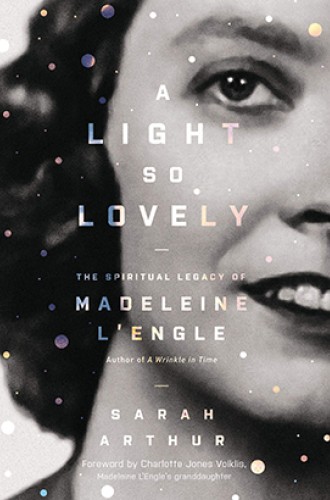Near the end of A Wrinkle in Time, Madeleine L’Engle’s 1962 fantasy novel of adventure and rescue, Mrs. Whatsit, one of the shape-shifting guardian matrons who accompanies the book’s three young protagonists, tells the children that each life is a sonnet and each person is the poet and creator of his or her life: “But within this strict form the poet has complete freedom to say whatever he wants, doesn’t he?” In that theopoetic question lies the seed of L’Engle’s belief in the capacity of narrative to contain changing human experience and developing thought.
In this warm and admiring spiritual biography, published 100 years after L’Engle’s birth, Sarah Arthur paints a picture of an author and mentor to many who kept plots—including the plot of her own life—moving by traversing the literary conventions and traditional boundaries that limited less adventurous writers. For example, although L’Engle had no formal training in theology or science, she explored both fields with passionate interest and held them together in her writing. Arthur writes that L’Engle said often that she had “never seen any conflict between science and religion, because all science can do is enlarge our vision of God.” In lectures and speeches, L’Engle defended the integration of science and faith, art and religion, secular and sacred, fact and fiction.
In the early 1950s, as L’Engle pursued her literary ambition, she moved with her family from New York City, where she and her husband worked in the theater business, to Goshen, Connecticut. From an old farmhouse of “charming confusion,” L’Engle parented her young children, operated a general store, and tried to kick-start her literary career. Early in this spiritually and vocationally unsettled period, she confessed to a Congregational minister that she did not believe in God but she found it impossible to live as if she did not believe in God. In spite of this comment—or perhaps on account of it—the minister asked L’Engle to teach Sunday school.





